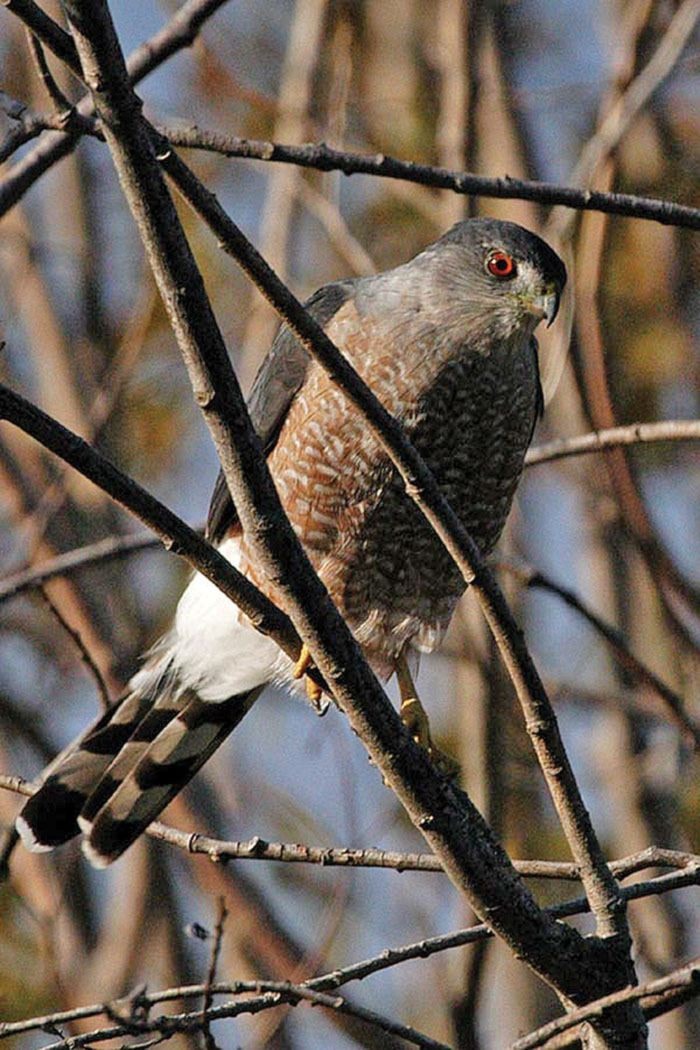I recently went on a rescue mission to the Point Holmes area of Comox after receiving a call about a hawk in distress.
It was unable to fly and was sitting in front of the house. However, as often happens with rescues, the bird had run for cover just before I arrived.
Although it could not fly it was able to run along the ground and disappear into a hedge. After a short time we finally managed to flush the bird to an area where I was able to grab it.
My first thoughts were that it was a merlin but without further examination I could not be certain. The bird was taken back to Mountainaire Avian Rescue Society (MARS) where it was examined for injuries and identification.
At that time, there were no visible injuries but the hawk was obviously in distress so it was kept warm and quiet over night.
Unfortunately, as is a common occurrence with birds that are highly strung, the hawk did not survive the night most likely due to internal injuries from hitting a window.
Eventually we were able to identify the bird as a sharp shinned hawk; often confused with Cooper’s hawks, they are both classified as Accipiters and are distinguished from the merlin, which is a falcon, by their size and coloration.
Adding more confusion to identification is that juveniles and adult birds change their colouration as they reach maturity.
For the average bird watcher, myself included, it is very difficult to set the two hawks apart especially when in flight.
The Cooper’s and sharp shinned hawks are very similar in coloration however, the Cooper’s hawk is much larger with a rounded tail end, whereas the sharp shinned is the smallest North American Hawk and has a squared off tail.
Just to further confuse identification are the colour of the eyes, an immature sharp shinned hawk has yellow eyes which change to dark red in adult birds.
To rule out the merlin, one only has to look at the beak. Merlins have a notch on their upper beak which is used to kill their prey caught in flight.
Coniferous forests are the habitat of choice for sharp shinned hawks, but they have adapted well to urban areas provided there are trees nearby for them to hide in.
Sharp shinned hawks are daring, acrobatic fliers that use their long tails to navigate their way through dense wooded areas in pursuit of their favorite meal, song birds.
What may seem savage to some is actually nature’s way of culling the sick or weak birds that are not alert or show abnormal behaviour.
If you have feeders in your back yard but are noticing that they are being attacked by hawks, you may need to temporarily remove the feeder.
Once you do this the hawk will relocate to another food source allowing you to replace the feeder and the song birds should return.
Nesting for the sharp shinned hawks is a private affair. They construct a platform of twigs close to the trunk of a tree with dense foliage. Often they will reuse or refurbish abandoned crow or Cooper’s hawk nests.
Once hatched, the young hawks are made to work hard for their food by the adults who will hover in the air clasping the food in outstretched talons.
This “tough love” approach assures that the young hawks become assertive and aggressive which is a requirement if they want to make it to adulthood.
Winter sees some populations migrate south to Mexico, but like so many species others are electing to stay year round.
Winter is a very treacherous time for many wildlife species, one that forces them to stray outside of their territory in search of meagre food supplies.
Be aware of low flying seagulls when driving across river bridges, many gulls are getting hit by vehicles as they feed on the spawning salmon. Please check outdoor areas to make sure that there are no creatures tucked under decks or in sheds and remember that feeders also attract unwanted guests so make sure they are cleaned regularly including the soil underneath.
Take time to walk the local beaches, estuaries or other spots that migratory birds call home for the winter, there are some amazing sights.
To follow the progress of patients at MARS check our Facebook page for updates and photos.
www.wingtips.org
